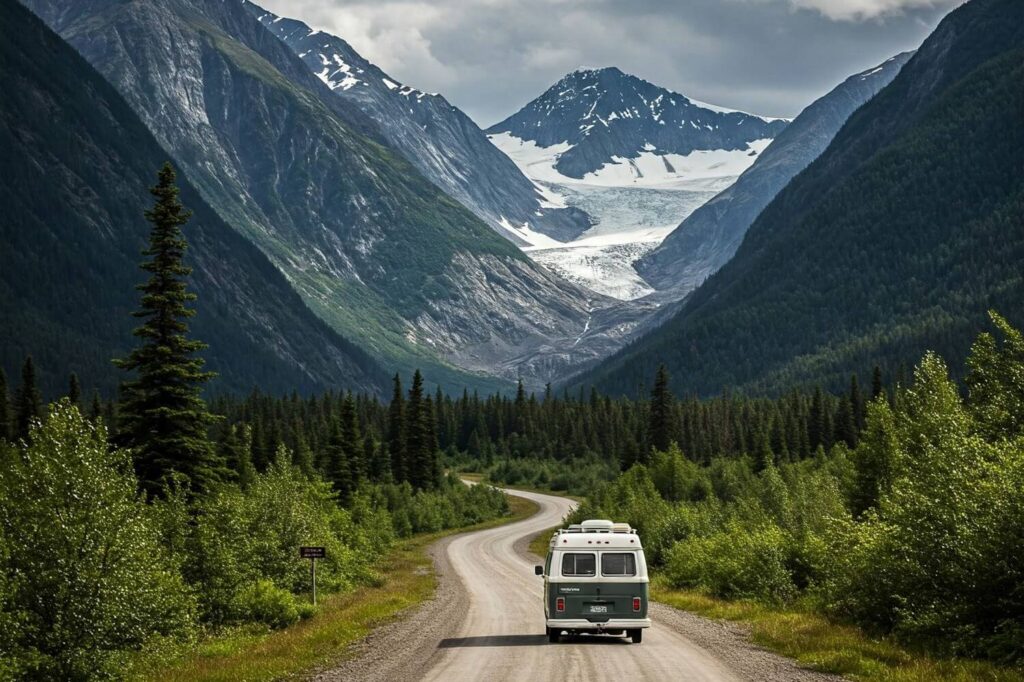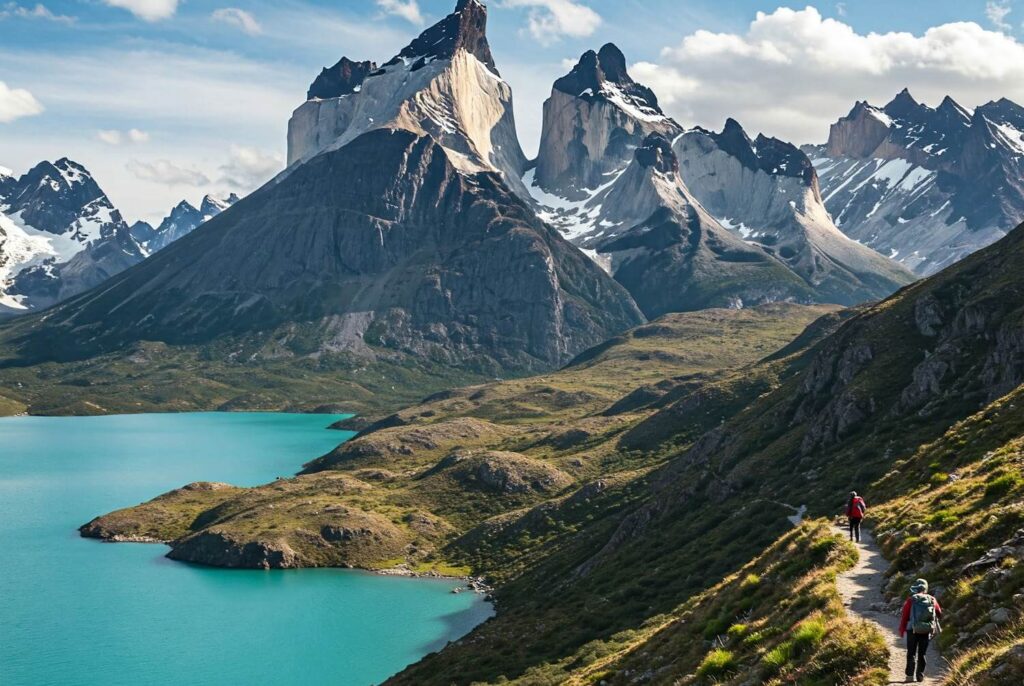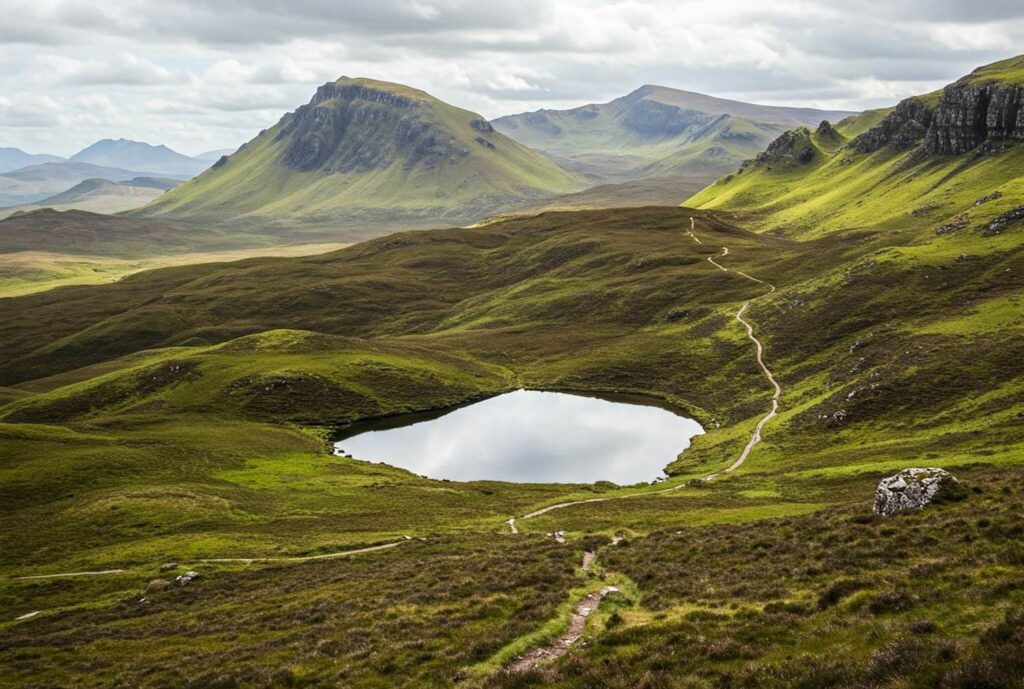Introduction to the Alaskan Highway
The Alaskan Highway, often referred to as the Alaska Highway, is a remarkable feat of engineering, cutting through some of the most breathtaking and untamed wilderness in North America. This highway stretches approximately 1,390 miles from Dawson Creek in British Columbia to Delta Junction in Alaska. Its history dates back to World War II, a time when the need for a reliable transportation route became paramount. With growing concerns for national security, the U.S. established this thoroughfare in 1942 to connect the contiguous United States with Alaska, allowing for the efficient movement of troops and supplies.
Constructing the Alaskan Highway was fraught with challenges. Workers faced harsh weather conditions, rugged terrain, and the constant threat of wild animals. Despite these adversities, they persevered, building over 1,500 miles of road through mountainous regions, dense forests, and wetlands. The original construction was a hastily assembled endeavor, often using makeshift materials, which led to the highway being dubbed a “pipeline to Alaska.” This monumental effort culminated in a significant transportation link that has since transformed access to the remote regions of Alaska.
Today, the Alaskan Highway is not only a vital route for transportation but also a popular drive for travelers seeking adventure and connection with nature. Its scenic vistas, ranging from lush valleys to towering mountains and sparkling rivers, attract adventurers and road trip enthusiasts from around the globe. As we explore this iconic route, one can expect to encounter an array of natural wonders and cultural experiences that define the Alaskan spirit. The highway stands as a testament to human ingenuity and resilience, inviting travelers to partake in the adventure that awaits on this legendary road.
Planning Your Journey
Embarking on a road trip along the Alaskan Highway requires careful planning to ensure an enjoyable experience through the rugged wilderness. The optimal time to traverse this scenic route is during the summer months, from late May to September, when weather conditions are most favorable. During these months, travelers can expect milder temperatures and longer daylight hours, allowing for ample opportunities to explore the breathtaking surroundings.
When preparing for your journey, it is crucial to pack thoughtfully. Essential items include durable clothing suitable for changing weather patterns, a well-equipped first aid kit, and reliable navigation tools, such as updated maps or a GPS device. Additionally, consider bringing extra gasoline, especially when traversing remote areas, as fuel stations may be sparse. Firewood, sunblock, bug spray, and sufficient food and water supplies are also important for a comfortable journey through the wilderness.
Vehicle preparation plays a significant role in the success of your road trip along the Alaskan Highway. Ensure that your vehicle is in good condition by having a thorough mechanical inspection before you embark. This should include checking the brakes, tires, oil levels, and battery. Having full-size spare tires and emergency equipment like a jack, tire repair kit, and jumper cables can be beneficial in remote areas where assistance may be limited.
Additionally, familiarize yourself with the road conditions along the highway. The stretch can vary greatly between paved and unpaved surfaces and can be affected by seasonal factors such as rain or snow. Take the time to research required permits, as there may be specific regulations for crossing certain borders or entering national parks. Lastly, explore the accommodations available, from campgrounds to hotels, to plan your overnight stops efficiently.
Notable Stops Along the Route
The Alaskan Highway, renowned for its breathtaking scenery and adventurous spirit, features several notable stops that enhance the journey for travelers seeking to immerse themselves in the rugged beauty of the landscape. Each town and attraction along the route offers unique experiences and insights into the region’s cultural and natural heritage.
One of the premier stops on the highway is Tok, often referred to as the “Gateway to the Interior.” This town serves as an important junction for travelers, providing essential services like accommodations and fuel. Visitors can explore local museums highlighting the area’s history and indigenous cultures. For outdoor enthusiasts, the surrounding wilderness offers countless opportunities for hiking and wildlife viewing.
Continuing north, the historic town of Delta Junction presents a unique convergence of roads and stories. Here, travelers can visit the famed “End of the Alaska Highway” sign, a quintessential photo opportunity marking the completion of their journey. The town is also near the scenic Delta River, where kayaking and fishing are popular activities during the warmer months.
As one progresses further into the wild, Fort Nelson provides a chance to delve into the rich history of the Alaskan Highway through the local Heritage Museum. This site presents artifacts and exhibits detailing the highway’s construction during World War II and its importance in connecting remote communities. Moreover, travelers are often rewarded with spectacular views of the nearby mountains, making it a perfect spot for those who enjoy photography.
Lastly, the vibrant town of Whitehorse offers a blend of modern amenities and rich history. This capital city of Yukon is known for its cultural attractions, including art galleries, shops, and the famous S.S. Klondike National Historic Site. Visitors to Whitehorse can experience the charm of the North while engaging with its local Indigenous cultures through storytelling and traditional performances.
These notable stops along the Alaskan Highway not only serve as rest points but also as gateways to understanding the wilderness and cultures that define this remarkable region. Each location presents a unique opportunity for exploration and appreciation of the untamed beauty that is emblematic of the Alaskan experience.
Wildlife Encounters on the Highway
The Alaskan Highway is renowned not only for its stunning landscapes, but also for the abundant wildlife that inhabits the regions it traverses. Travelers along this scenic route often have the unique opportunity to observe a variety of animals in their natural environments. Among the most commonly sighted wildlife are moose, bears, and eagles, each offering a captivating glimpse into the rich biodiversity of Alaska.
Moose are one of the most iconic animals found along the highway, particularly in areas where there are plenty of willows and wetlands. While they are generally docile, it is essential for drivers to be vigilant, especially during dawn and dusk when moose are most active. Bears, both black and grizzly, can also be spotted, often foraging for food. When encountering bears, maintaining a safe distance is paramount. The use of binoculars or zoom lenses is advisable for photography, ensuring safety for both the observer and the animal.
Eagles are another majestic species that can frequently be seen soaring above or perched on trees. These birds of prey are often observable near water sources, searching for fish. Photographers are encouraged to respect the wildlife by remaining at a distance and refraining from any actions that may disturb their natural behavior, particularly during nesting seasons.
Understanding seasonal behaviors enhances the chance of spotting wildlife effectively. For example, spring and summer months are ideal for viewing wildlife with young, while autumn may provide sightings of bears preparing for hibernation. Respecting wildlife habitats and following guidelines set by local authorities reinforces responsible tourism. Staying within the designated roads and observing wildlife from a safe distance contributes to the conservation of Alaska’s rich natural heritage.
Experiencing the Untamed Nature
The Alaskan Highway offers travelers an unparalleled opportunity to immerse themselves in a breathtaking array of natural landscapes. As you traverse this iconic route, you will encounter diverse ecosystems that vividly showcase the beauty of the Alaskan wilderness. From the sprawling pine forests and lush meadows to the rising peaks of majestic mountains, each turn reveals a new vista that invites admiration and reflection.
One of the most striking features along the highway is the myriad of rivers and lakes that punctuate the landscape. The crystal-clear waters of these bodies attract numerous species of wildlife, offering abundant opportunities for birdwatching and photography. Paddling along a serene lake or stopping at a riverbank for some quiet reflection can transform a standard road trip into a meaningful journey through nature’s wonders. Enthusiasts often find themselves captivated by the shimmering reflections of surrounding peaks in the water, creating picture-perfect moments that beckon to be captured.
The highway also gives access to stunning hiking trails leading into various natural preserves and remote wilderness areas. These trails range from gentle walks to challenging treks, providing options for both the novice hiker and experienced adventurer alike. Setting out on these hikes allows visitors to engage more intimately with the stunning surroundings, whether it be spotting wildlife such as moose and bears or discovering unique flora that thrive in this untamed terrain.
Additionally, the tranquil ambiance fostered by the absence of urban noise makes every picnic more enjoyable, as the sounds of rustling leaves and chirping birds create a natural symphony. Travelers can delight in the stunning natural backdrops while indulging in delightful meals amidst the wildness. Overall, the Alaskan Highway captivates those who seek a deep connection with nature, evoking a sense of peace and wonder that stays long after the journey is over.
Cultural Insights: Indigenous Heritage
The Alaskan Highway serves as more than just a route through stunning landscapes; it also acts as a bridge connecting travelers to the rich cultural heritage of the Indigenous peoples of Alaska. These communities, including the Tlingit, Haida, Inupiat, and Athabaskan, have inhabited the region for thousands of years, each contributing unique traditions, languages, and arts to the cultural mosaic of Alaska. Understanding this Indigenous heritage is essential for anyone embarking on a journey along the highway.
Historically, the Alaskan Highway, originally constructed during World War II, has been intertwined with the lives of Indigenous peoples. The road enabled greater access to their lands and fostered interactions between different cultural groups, influencing both Indigenous and settler communities. Presently, travelers can engage with local Indigenous cultures in various ways, including visiting traditional villages, participating in cultural festivals, and exploring art galleries that showcase Indigenous artwork.
Visitors may encounter a range of festivals celebrating Indigenous customs and storytelling. Events like the Celebration in Juneau bring together performers who showcase traditional dances, drumming, and oral histories. These gatherings not only serve to preserve Indigenous culture but also offer an opportunity for travelers to experience first-hand the storytelling traditions that have been passed down through generations.
Furthermore, Indigenous art forms, such as totem pole carving, weaving, and jewelry-making, are significant elements of the Alaskan cultural landscape. Travelers can explore shops and galleries where these artisans share their creations, often imbued with spiritual and cultural symbolism. By purchasing Indigenous art, visitors can support local creators while gaining a deeper appreciation for the narratives woven into each piece.
As travelers traverse the Alaskan Highway, immersing themselves in the diverse Indigenous heritage of the region enriches the overall experience, highlighting the historical and contemporary significance of these cultures. Understanding their impact on the identity of Alaska provides a broader perspective on the untamed wilderness that forms one of North America’s most captivating road trip destinations.
Safety Tips for the Journey
Traveling the Alaskan Highway necessitates careful preparation to ensure a safe and enjoyable experience amidst its untamed wilderness. One of the most significant factors to consider is the weather, which can be unpredictable and extreme. It is advisable to check local weather forecasts regularly and be prepared for sudden changes. Bringing appropriate clothing, including layers and waterproof gear, can make a notable difference in comfort and safety during your journey.
Road hazards can further complicate your trip on the Alaskan Highway. Be vigilant for wildlife crossing the road, potholes, and loose gravel, particularly in remote areas where road maintenance may be limited. Staying within speed limits and maintaining a safe distance from other vehicles can help mitigate risks associated with these hazards. It is wise to drive during daylight hours when visibility is optimal.
As you traverse this scenic route, vehicle maintenance cannot be overlooked. Ensure that your vehicle is in good condition – this includes checking tire pressure, fluid levels, and brakes before embarking on your journey. Carrying a spare tire, jack, and emergency tools is essential, as roadside assistance may not be readily available in some sections of the highway. Additionally, consider having a comprehensive roadside emergency kit that includes jumper cables, flares, and a basic first aid kit.
In terms of emergency preparedness, keep communication devices such as a charged mobile phone and GPS unit on hand, even if service may be limited along certain stretches. It’s advisable to inform someone of your travel plans and expected arrival times, especially if traveling solo. In case of car trouble, stay with your vehicle unless you have a clear path to safety or assistance. Overall, investing time in adequate preparation will greatly enhance your safety and create a more enjoyable experience while navigating the rugged beauty of the Alaskan Highway.
The Experience of Camping Along the Highway
Camping along the Alaskan Highway offers a diverse range of options for travelers seeking to immerse themselves in the breathtaking wilderness. From public campsites to established RV parks and secluded backcountry sites, each choice provides its own unique experience. Public campsites are often located in scenic areas, offering amenities such as water access, restrooms, and picnic tables, making them ideal for families and those new to camping. These campsites allow for easy access to scenic views, hiking trails, and opportunities for wildlife observation.
For those with larger vehicles, established RV parks present a comfortable alternative, featuring full hookups for water, sewage, and electricity. This option appeals to travelers who wish to maintain certain amenities while exploring the rugged landscapes. RV parks can often provide convenience through on-site facilities such as showers and laundromats, making them suitable for extended stays. However, more adventurous souls may opt for remote camping areas, which typically require a willingness to navigate unmarked paths or more challenging terrains. These locations often offer solitude and an immersive experience deep within nature.
Regardless of the camping option chosen, preparation is essential for a successful camping experience along the Alaskan Highway. Travelers should prioritize packing the necessary gear, including a quality tent, sleeping bags, cooking utensils, and appropriate clothing to address potential weather fluctuations. It is equally important to adhere to campsite etiquette, maintaining cleanliness and respecting the natural environment. Furthermore, evenings by the campfire can be a highlight of the trip, offering warmth and an opportunity to gather under the starlit sky. With the right preparation, camping along the highway can create lasting memories and a deep connection to the untamed beauty of Alaska.
Reflections: Making Memories on the Alaskan Highway
The Alaskan Highway is more than just a route; it serves as a pathway through some of the most stunning wilderness in North America, offering travelers unique opportunities to create lasting memories. As you embark on this adventurous journey, take a moment to appreciate the breathtaking landscapes that unfold before you. The towering mountains, expansive forests, and pristine lakes provide the perfect backdrop for personal reflection and connection with nature. Each mile traveled can evoke a sense of freedom, awakening the spirit of adventure within.
Along the way, the highway presents you with the chance to forge new friendships with fellow travelers. Sharing stories around a campfire or exchanging tips with locals can transform a simple road trip into a shared experience filled with laughter and camaraderie. These connections can enrich your adventure, leading to spontaneous detours and unforgettable moments that will remain etched in your memory long after your journey has ended.
It is essential to document your experiences during your travels on the Alaskan Highway. Keeping a journal, snapping photographs, or even creating a travel blog can serve as a meaningful way to capture the beauty of the landscapes and the emotions tied to your experiences. Reflecting on your journey not only allows you to relive those moments, but also provides insight into personal growth and the lessons learned along the way.
As you prepare to hit the road, remember that the true magic of the Alaskan Highway lies in the unexpected encounters and experiences that await. This scenic route is a backdrop for an adventure like no other, where making memories will be as significant as arriving at your destination. Embrace the journey, celebrate the friendships formed, and cherish the incredible moments that are sure to arise as you traverse this untamed wilderness.





